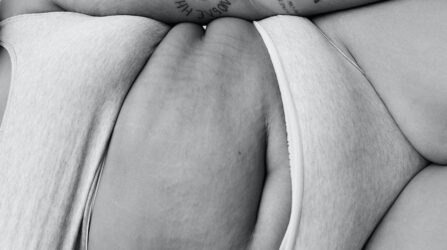
I was!
I wrote in my article on the PSOAS muscles how post-pregnancy my lower back had turned into ‘duck butt central’. And as you know, I’m pretty much game to give any alternative therapy a try, so when I went on holiday to Finland and saw the hotel offered traditional bone setting, I immediately booked.
As a therapy, it has been around since ancient times, and traditional bone setters were the forebears of today’s osteopaths, physical masseuses and chiropractors, minus the training. Many bone setters were self-taught, with both skills and knowledge passed down through the generations.
Traditional bonesetters are still popular today, in many developing countries as they can sometimes be the only source of treatment for bone injuries, are often cheaper than a doctor, and more often than not offer quick results.
Folk medicine in Finland, which includes its famous sauna, cupping and bone setting, is still flourishing, mainly because it centres on a holistic approach, is not determined by time and relies on manual skills.
Bone setting is simply a form of joint manipulation, and Finnish bone setting, also known as ‘Kalevala’, is a whole-body massage treatment. It helps increase mobility, relaxes muscles and stimulates tissue function and your metabolic and nervous systems.
Like most bone setting treatments, Kalevala is gentle, for the most part, pain-free (see my experience) and respects your body’s natural limits, so you won’t find yourself moved into uncomfortable positions. (Unlike when you have a Hollywood wax, for example)
If you’ve been to an osteopath or chiropractor, you’ll find a bone setting session fairly similar. However, unlike the osteopath who targets a specific area of pain, a Kalevala session treats the whole body. During the session the body is balanced by manipulating the entire musculoskeletal system from the soles of your feet to the base of your skull, mobilising the tissues and making use of your natural flexibility and joint motion.
Many people have enjoyed the benefits of bone setting, and have seen improvements with:
The effectiveness of traditional bone setting in treating chronic pain was studied most notably in the 2007 and 2008 studies by N Zaproudina, O Hanninen, O Airaksinen, et al.
The 2007 study ‘Effectiveness of traditional bone setting in chronic neck pain: randomized clinical trial’ compared bone setting with conventional physiotherapy and massage in a random group of 105 participants, with data analysed before treatment began and then one, six and 12 months after treatment. Two-thirds of the participants found traditional bone setting beneficial, with the positive effects of the treatment lasting for at least a year.
A second study in 2008 ‘Effectiveness of traditional bone setting in treating chronic low back pain: a randomised pilot trial’, this time compared bone setting with physical and exercise therapy in a random group of 131 participants, with data analysed in the same time frames. In this study, most patients also found bone setting to be beneficial. However, the “long-term dynamics of pain and disability didn’t differ” between the two test groups, unlike the 2007 study that found bone setting improved the pain in neck patients.
Yes, I went on holiday to Finland to see Father Christmas and treated myself to a Finnish Bone Setting session, as you do!
As I mentioned earlier, post-pregnancy had left me with a ‘duck butt’, where the bottom of my spine tilted upwards at the back, so you could literally put a glass of wine on it. I have also suffered from lower back pain for years, to the extent I can’t lie on my back, prop myself up or lie on my stomach for any length of time, or indeed turn over in bed without wincing and waking myself up!
So obviously, I was game to try anything.
Well, it’s like a mash-up of osteopathy, reflexology and a really deep, and firm, massage treatment.
My bone setter couldn’t speak a word of English, which made for some very interesting hand signals when he needed me to unhook my bra!
They do indeed start at the bottom and work upwards, and the weird thing is you don’t actually feel anything miraculous going on. It just feels like a darn good massage. Nothing at all like the ones you get in the spas when the girls, bless them do everything in threes and ask if the pressure is too much. No, this was, to put it quite frankly, like a good pummelling, as if he was kneading bread. For this muscle-knotted girl, it was sheer heaven.
The feet and legs were first. Then it was the turn of the hands and arms, which was the only time I experienced any semblance of pain. I’m right-handed, and when my bone setter started on my thumb joint, I winced. Well, not so much winced as almost jumped out of the chair. Yeowch! He kept trying, but I only grimaced more. Then he realised what the problem was. He made a very good attempt at charades to explain the problem, which was due to me having my hand over a computer mouse every single day. Seeing the pain I was clearly in, he left the thumb joint and moved on to my back.
There was no pain, just the sheer bliss and ecstasy of pent up muscle tension being released.
In a way, I found it very cathartic.
After 90 minutes, it was over. When I got back to my room, the first thing I noticed was my back, or more accurately my backside. It was straight and back in alignment, no duck butt in sight. And I kid you not, that night I slept like a log, on my back!
That was nearly six years ago now, and I can confirm my backside is still straight, but I’m back to wincing if I turn over. Maybe I need to go back to Finland and have another session!
Would you ever give bone setting a go? What do you think? Quackery or is there something to it?
Let me know in the comments.
Until next time darlings.
Claire
Xx

-


Dr Singh is the Medical Director of the Indiana Sleep Center. His research and clinical practice focuses on the myriad of sleep.

What does spotting before your period look like? Spotting is a few drops of blood on your underwear that are not enough to soak a pad. It’s typically brown, light pink, or red and may only be noticeable on a

Postpartum hormonal changes: What are they? Postpartum hormonal changes occur when your body experiences shifting hormone levels after birth. After your baby is born, the doctor removes the afterbirth or placenta, which sends signals to your body that you’re no

What is ovulation fatigue? As women, we can get numerous symptoms throughout our menstrual cycles. One question we’re asked is, “Why do you get tired during ovulation?” For some, the answer could be ovulation fatigue. Ovulation fatigue is when you
Hormona© 2025, All Rights Reserved
| Cookie | Duration | Description |
|---|---|---|
| cookielawinfo-checkbox-analytics | 11 months | This cookie is set by GDPR Cookie Consent plugin. The cookie is used to store the user consent for the cookies in the category "Analytics". |
| cookielawinfo-checkbox-functional | 11 months | The cookie is set by GDPR cookie consent to record the user consent for the cookies in the category "Functional". |
| cookielawinfo-checkbox-necessary | 11 months | This cookie is set by GDPR Cookie Consent plugin. The cookies is used to store the user consent for the cookies in the category "Necessary". |
| cookielawinfo-checkbox-others | 11 months | This cookie is set by GDPR Cookie Consent plugin. The cookie is used to store the user consent for the cookies in the category "Other. |
| cookielawinfo-checkbox-performance | 11 months | This cookie is set by GDPR Cookie Consent plugin. The cookie is used to store the user consent for the cookies in the category "Performance". |
| viewed_cookie_policy | 11 months | The cookie is set by the GDPR Cookie Consent plugin and is used to store whether or not user has consented to the use of cookies. It does not store any personal data. |
